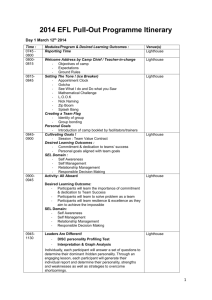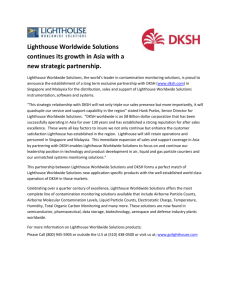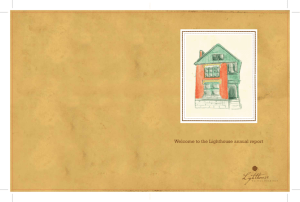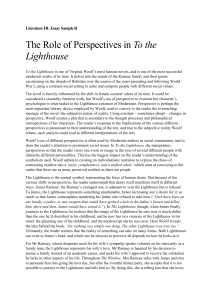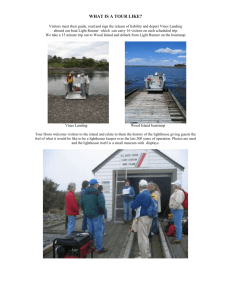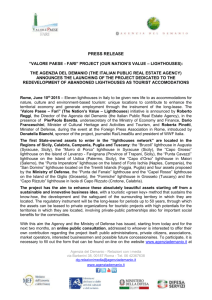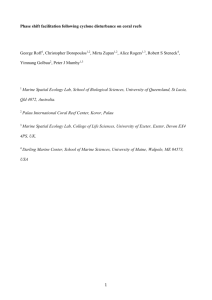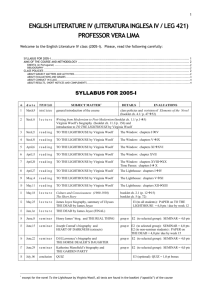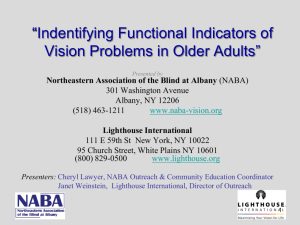Historical Context of To the Lighthouse
advertisement
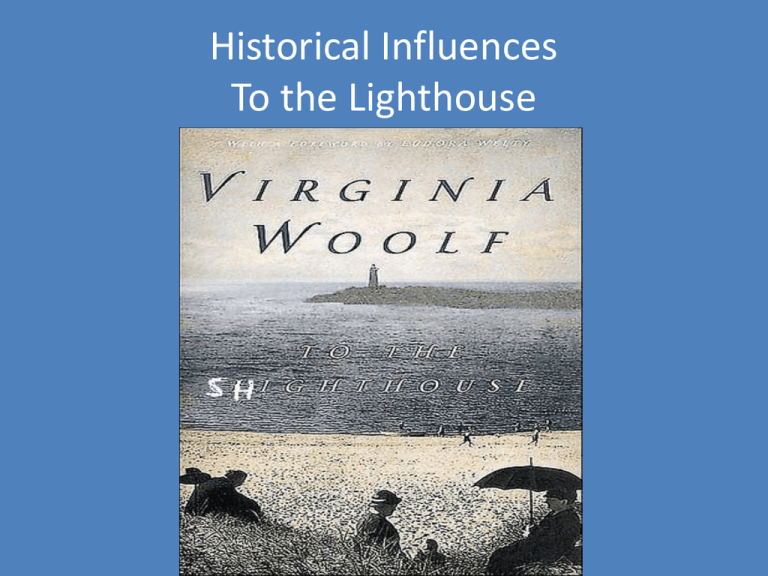
Historical Influences To the Lighthouse Post Impressionist Movement •Began in the Late 19th Century in France, it did not reach Britain until 1910 •Shift from focus on the Exterior Experience to the Interior Experience •Artists such as Georges Seurat, Paul Cezanne , and Vincent Van Gogh led this movement •New Style created focus in other areas than art such as Scientific Research and Increasing Psychological Research on the Individual Post-Impressionist Movement cont. • Roger Fry(1866-1934) Close Friend of Virginia Woolf • “Manet and the Post-Impressionists” Exhibit • Argued the new Post-Impressionist way of painting. “These artists do not seek to give what can, after all, be but a pale reflex of actual appearance, but to arouse the conviction of a new and definite reality. They do not seek to imitate form, but to create form; not to imitate life, but to find an equivalent for life” (Fry in Spalding, p. 39) • These ideas worked there way to Literary areas. Woolf’s To The Lighthouse was a Literary experiment in this form The Great War (World War I) • The most unforgettable historical event influencing Woolf’s To The Lighthouse • War raged on throughout Europe between 1914-1918 • The Effects of the War resonated through Literature as bitterness and alienation in the assessment of the war • Woolf also participates in this assessment. The 2nd part of To The Lighthouse “Time Passes” with her own description of the effects and ways things were during the war • Post-World War I literature began breaking older traditions of literature The Bloomsbury Group • Created around 1904 this group made up of Virginia Woolf, her husband Leonard Woolf(1880-1969) and other authors and artists of the time such as Lytton Strachey(1880-1932), E.M. Forster(1879-1970), Art Critic Roger Fry(1866-1934) and many more. • The Bloomsbury Group rejected the prudishness and valued expressionism and personal judgment • The Bloomsbury Group had produced works from topics spanning from Psychology to Economics. They produced paintings, biographies, novels, criticisms etc. Autobiographical Influences • Virginia Woolf used many parts of her own history represented in her novels. In To The Lighthouse she uses many of these autobiographical influences. • In To The Lighthouse she uses her father, Leslie Stephen(1832-1904) a Victorian Intellectual who became the editor of the Dictionary of National Biography as basis for the personality of Mr. Ramsey. • She uses her mother, Julia Duckworth Stephen(1846-1905) as the basis of Mrs. Ramsey’s character. She incorporates her mother’s beauty and solicitude into the character. • She is also influenced by a vacation home at Talland in an English Southern town of St. Ives, Cornwall where The Stephen family would vacation during the summer. Bibliography • Price, Danielle E., and Michelle N. McEvoy. "To the Lighthouse." Literature and Its Times Supplement 1: Profiles of 300 Notable Literary Works and the Historical Events that Influenced Them. Joyce Moss. Vol. 1: Ancient Times to the Harlem Renaissance (Beginnings-1920s). Detroit: Gale, 2003. 463-472. Gale Virtual Reference Library. Web. 2 May. 2011. • "The Importance of the Work." To the Lighthouse: The Marriage of Life and Art. Alice van Buren Kelley. Boston: Twayne Publishers, 1987. 5-7. Twayne's Masterwork Studies 11. Gale Virtual Reference Library. Web. 2 May. 2011.
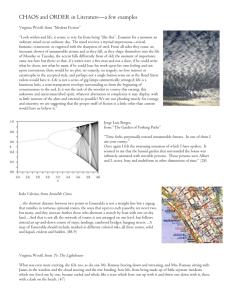
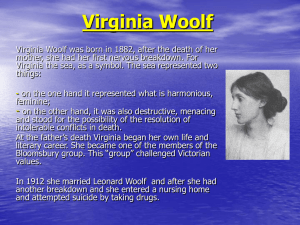
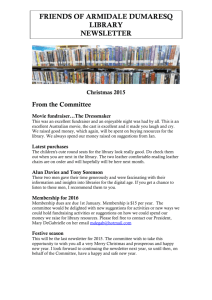
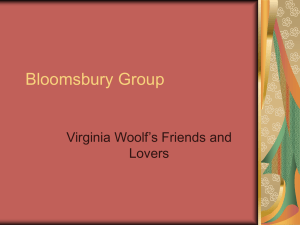
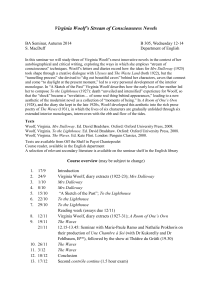
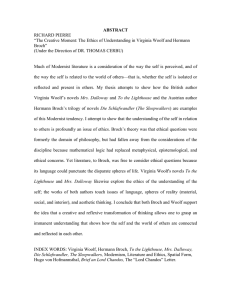

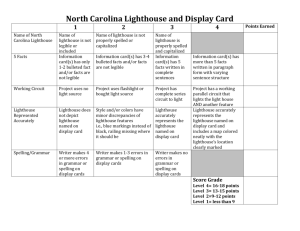
![Special Author: Woolf [DOCX 360.06KB]](http://s3.studylib.net/store/data/006596973_1-e40a8ca5d1b3c6087fa6387124828409-300x300.png)
